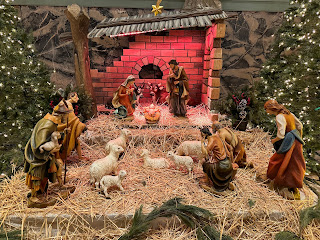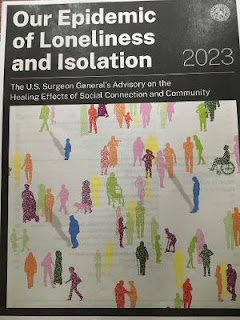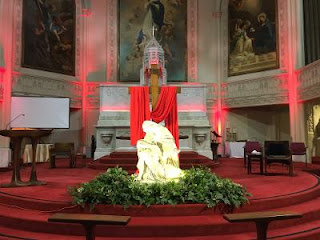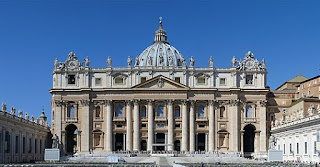According to the traditional announcement of the feast of the Nativity in the Roman Martyrology (originally proclaimed on the morning of Christmas Eve but which nowadays frequently precedes the celebration of the Midnight Mass) Jesus was born in Bethlehem, in the forty-second year of the reign of Caesar Octavian Augustus, the whole world being at peace.
One of the great monuments of Ancient Rome is the the Ara Pacis Augustae (« Altar of Augustan Peace »), consecrated just a few years before the birth of Jesus. The altar celebrated the Pax Romana, which was the product of Caesar Augustus’ successful establishment of his empire-wide imperial rule. This was the world-wide peace, to which the Martyrology refers, a world-wide peace which brought hope to an empire tired of endless wars and civil wars, a world-wide peace which enabled Caesar to present himself as the world’s savior, and which eventually enabled the good news of the world’s true savior to be proclaimed from Jerusalem to Rome.
Caesar’s peace was a real peace, in so far as it marked the end of a long period of wars and civil wars, and it brought many benefits which would be remembered fondly for centuries. But, like all human political peace, it was an ambiguous peace, based on conquest, control, and domination. The true peace of the Prince of Peace born at Christmas can also appear ambiguous, because it proclaims a hope which is often belied by the continued actual human experience of power, control, and domination, both within societies and in the conflicts that characterize the relationships among them. Thus, it was that first Christmas, and thus it is still now in a world of war.
Of course, we all want our Christmases to be perfect. That perfect Christmas-card family picture is one way we use to say to the world (and so maybe reassure ourselves) that everything is really OK. In fact, however, as is obvious from the original Christmas story, Christmas is often celebrated in less than optimal conditions – by those, like Mary and Joseph, who are homeless and have only strangers for company, by the lonely and those who mourn, by the sick in hospitals, by immigrants far from home, by political refugees seeking asylum, as Mary and Joseph and Jesus would soon be forced to seek in Egypt, and by soldiers at war (like my own father, fighting with the 186th Field Artillery Battalion at the Battle of the Bulge in 1944, what one historian called “the worst Christmas for American soldiers since Valley Forge”).
On Christmas Eve 1942, midway through that terrible Second World War, Pope Pius XII addressed that war-weary world with the perennial promise of « mercy, love, peace to the countless hosts of those in suffering and tribulation who see their happiness shattered and their efforts broken in the tempestuous strife and hate of our stormy days.”
Such « stormy days » and « the tempestuous strife and hate » which characterize them are very much the world’s present reality – whether we consider Hamas’ war of aggression against Israel, Russia’s war of aggression against Ukraine, or any of the many (if less publicized) conflicts in Congo, Sudan, Syria, etc., and the September 2023 ethnic cleansing of over 100,000 Armenians from Nagorno-Karabakh.
Such was the world into which the Word became flesh. Such is the world in which Christ comes to us and stays with us today.





